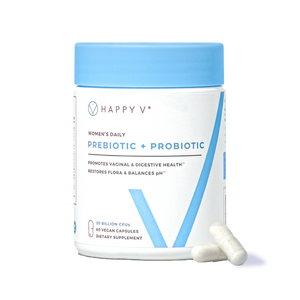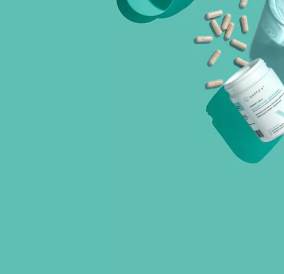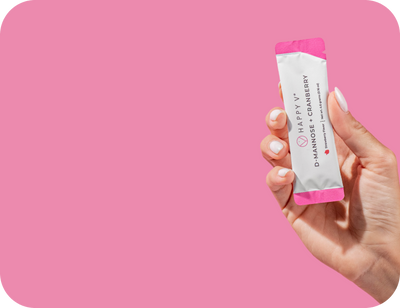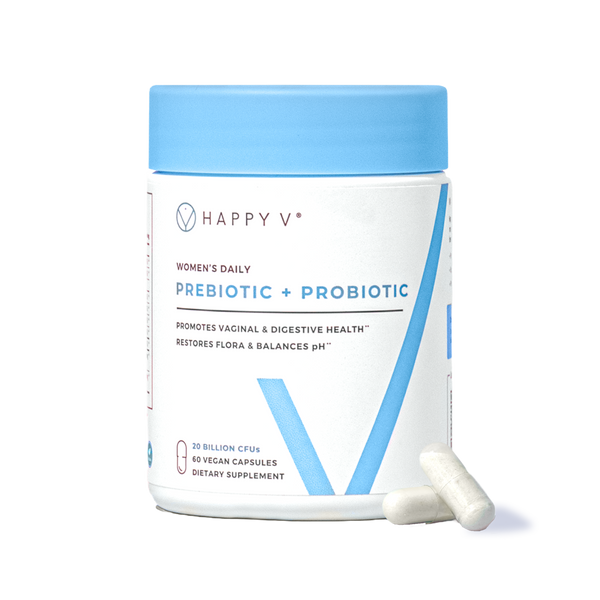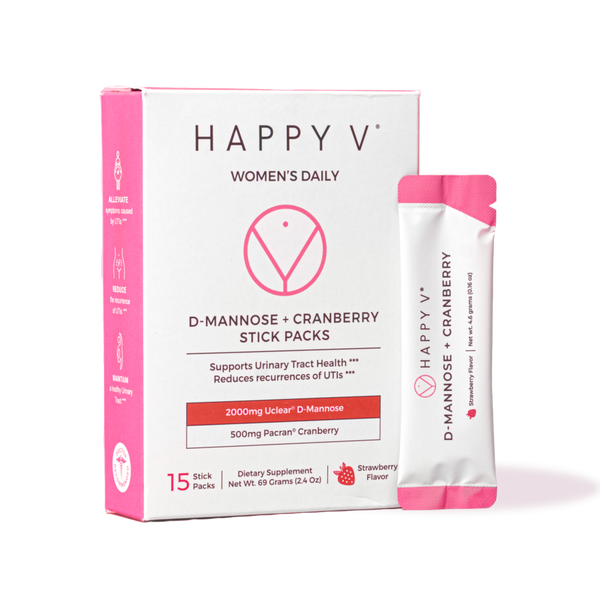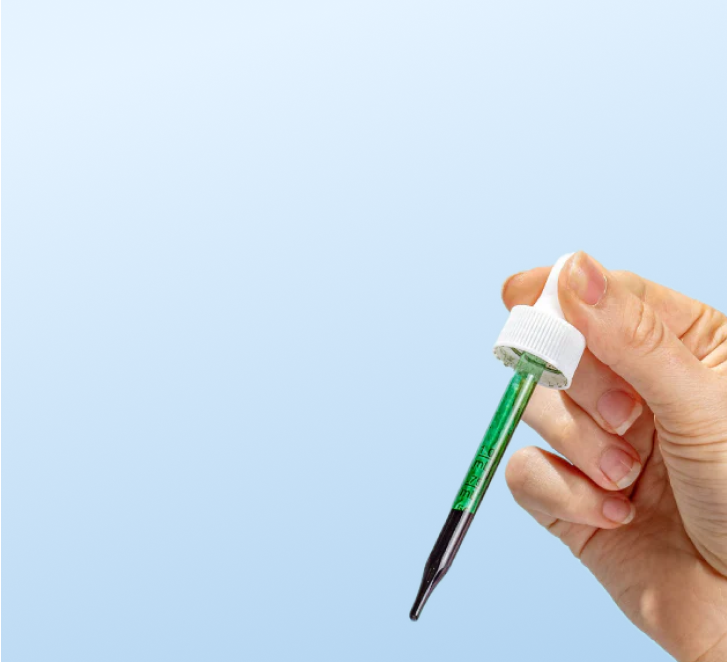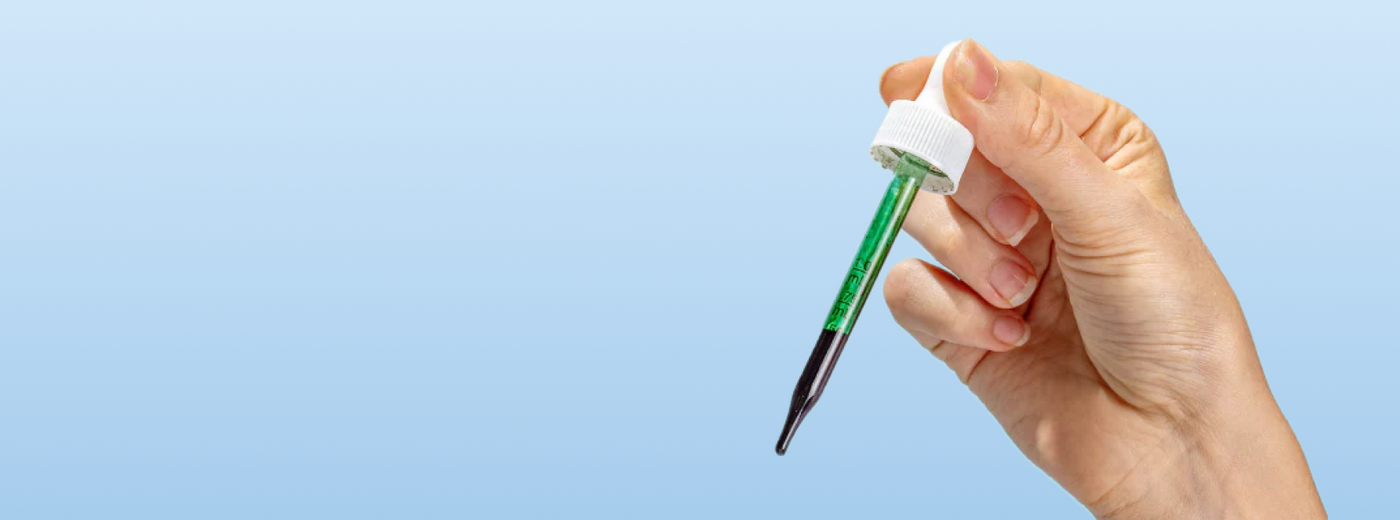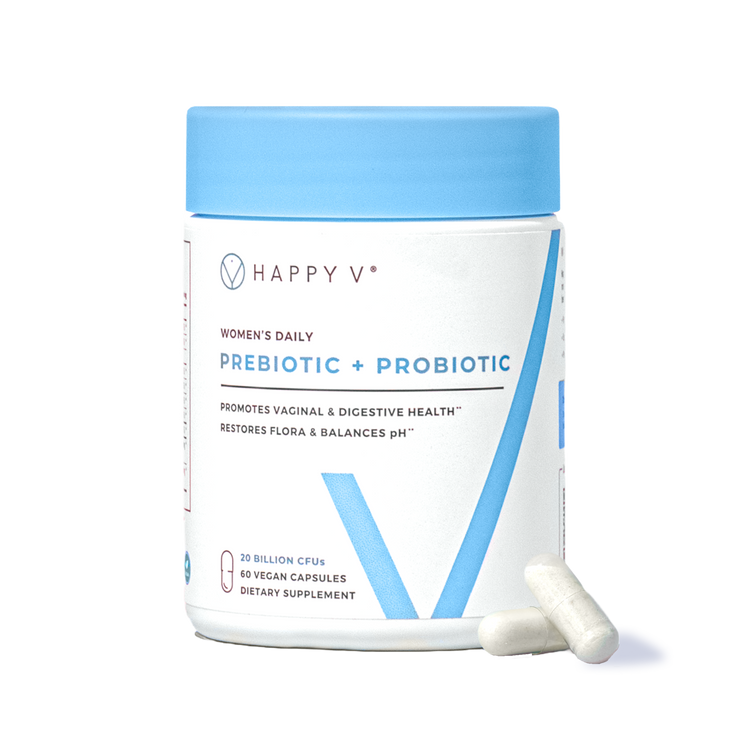- Fact Checked
- December 16, 2025
- 17 min read
Are Bumps Inside the Vagina Normal? How to Tell
Table of Contents
Table of Contents
Chances are, you’re reading this right now because you felt a bump "down there" and are feeling a little concerned.
Though we often think any kind of bump = a very bad sign, the truth is that bumps in the genital area can be caused by a variety of things. Some are benign, and some are more serious. So, how can you tell what kind of bump you are dealing with? We’ll dive into all that and more, so you can swap those feelings of panic for ones of empowerment.
This post is for informational purposes only and does not constitute medical advice. See full disclaimer below.
Quick Anatomy Refresher: Vulva vs Vagina
Before we dive into all the kinds of bumps you might encounter and their potential causes, we need to do a quick anatomy refresher to remind everyone of the difference between the vulva and the vagina.
Though people often use the word "vagina" to describe the entire female genitalia, the vagina is the internal canal leading to the cervix, meaning it's on the inside of your body1. The area outside your vagina that includes the labia majora, labia minora, the clitoris, and the urethra is called the vulva.
As you’ll see as you dig deeper into this blog, certain kinds of bumps often appear in different locations, so it's important to know the correct term for where your bumps are located to determine what is causing them, how to care for them, and how to describe them accurately to your healthcare provider if needed.
How to Check for Vaginal Bumps
Many women first notice they have a bump while washing themselves in the shower. If you ever notice a bump like that or something just feels “off” or uncomfortable down there, it’s important to get up close and personal through a self-exam and see exactly what’s going on. We know self-examinations can be awkward at first, but trust us when we say it's critical to put discomfort aside and take a good look at yourself.
To do a self-examination:
- Grab a hand mirror and lie down on the couch
- Look for areas that are red, as well as any sores, blisters, bumps, lesions, or warts
- Separate your pubic hair so you can see the area underneath
- Separate the vaginal lips to examine the skin, the clitoris, and the vaginal opening
Note where exactly the bumps are located, how many there are, what they look like, and how they feel to the touch. This is all information you will need to begin to discern what is going on and what you should do next.
Even when everything feels totally fine, regular self-examinations are an important part of vulvar skincare and can help you catch changes early. Making this a monthly habit allows you to become familiar with what's normal for your body, so you'll be more likely to notice when something is different.
Causes of Normal Bumps and Non-STD Bumps
Like any other area of your skin, the skin around your genitals is prone to pimples, blocked sweat glands, and ingrown hairs2. The bumps associated with these are all normal and not associated with a more serious issue like sexually transmitted infection or STI.
It's also not uncommon to see what are known as Fordyce spots on the hairless parts of the vulva3. These are essentially raised sebaceous glands, and appear as small, slightly elevated, whitish bumps that are not painful to the touch.
But there are other normal bumps you may encounter during your self-examination, too. Let's go over the most common.
Cysts: Bartholin's and Gartner's Duct Cysts
The word "cyst" sounds scary, but these cysts are harmless, fluid-filled sacs that can develop on various parts of the body, including the vaginal area4. There are several types of cysts that can appear, with the two most common being Bartholin gland cysts and Gartner's duct cysts, which are both considered vaginal cysts.
Bartholin gland cysts are found at the vaginal opening5. They occur when the Bartholin gland at the opening of the vagina becomes blocked for some reason. While not harmful, these cysts can be painful when walking or sitting. If you suspect you have Bartholin gland cysts that are causing you pain, talk to your gynecologist or healthcare provider. They may suggest taking sitz baths or draining the cysts surgically. If they are concerned the cysts have developed into an abscess or show signs of infection, they may prescribe antibiotics.
Unlike Bartholin gland cysts, Gartner's duct cysts are located inside the vagina on the vaginal wall and are generally not painful unless they become large6. If you are experiencing unexplained pain higher up in your reproductive system, like your ovaries, make an appointment with your doctor to rule out ovarian cysts.
You might also encounter inclusion cysts, which are small skin-colored bumps that can form on the vaginal wall or labia after trauma or childbirth.
Contact Dermatitis: Allergic and Irritant
As you might imagine, the skin around your genitals is incredibly delicate and prone to irritation from products like scented soaps, scented hygiene products, tampons, and even certain laundry detergents.
If you are experiencing an allergic reaction to a particular product, you will generally experience symptoms like itching, redness, and swelling. With contact dermatitis or general irritation, you may also notice red, damaged skin in the areas that were directly in contact with the irritant. What’s causing this irritation may be immediately obvious, or you may need to do some detective work and process of elimination to figure out what’s causing this reaction.
Ingrown Hair, Folliculitis, and Sebaceous Cyst
Redness, pain, or swelling around hair follicles is generally related to shaving, waxing, or blockage of the sweat glands. Folliculitis is an inflammation of the hair follicles that can create red bumps or pimples around pubic hair.
If you have a sebaceous cyst or ingrown hair that's painful, you can use a warm compress to lessen the swelling or unblock the sweat gland, and you can prevent future issues by practicing proper hair removal techniques, which include shaving in the direction of hair growth (not against) and rinsing the blade after each stroke7.
If the bumps don't go away or you notice they become red or painful, they may be infected and require medical attention. In these cases, your doctor will generally prescribe antibiotics to clear the infection.
Varicosities (Vaginal Varicose Veins)
Most people think about varicose veins on their legs, but varicose veins (aka enlarged veins) can appear on the vulva or along the inner thighs. Generally, these enlarged veins are due to pregnancy or general circulatory issues, but other health issues like obesity, chronic constipation, and a family history of varicose veins can also put you at risk.
While varicose veins can look alarming, they’re often harmless8. If you feel like they’re leading to a feeling of heaviness, itching, or pain, talk to your doctor. They may suggest supportive garments or exercises to improve circulation and treat the varicose veins. If your varicose veins are due to pregnancy, most women notice they improve significantly following childbirth.
Lichen Sclerosus
Lichen sclerosus is not exactly bumps but rather areas of white, patchy skin that seem thinner than usual9. The exact cause of this skin condition isn’t exactly known, but there are certain genetic and hormonal factors at play, and it is most commonly diagnosed in postmenopausal women.
If your lichen sclerosus is particularly itchy or uncomfortable or causing pain during sex, talk to your gynecologist. There are treatment options available, like topical corticosteroids or other prescription creams that can help manage symptoms and prevent progression.
Skin Tags
Skin tags can appear anywhere on the body where there’s friction or skin rubbing together10. They look like soft, flesh-colored growths and are both harmless and painless. Some women are bothered by their appearance, though. If you’re one of them, you can talk to your OB-GYN about potential removal.
Molluscum Contagiosum
Molluscum contagiosum is a viral infection caused by a poxvirus (yes, like chicken pox) that causes pearly white bumps on the abdomen, legs, arms, neck, face, and genital area11. The bumps are usually small with a sort of dimple in the center, and, like chicken pox, they can become itchy, though generally not painful. This infection spreads through skin contact, including sexual contact.
More often than not, the only way to get rid of molluscum contagiosum is to let it run its course, which can take several months (or more!), though treatments like topical creams or prescription medications are available to resolve it faster.
Until molluscum contagiosum resolves, avoid spreading it to others by covering the bumps with clothes or bandages, not sharing personal items, and practicing good hygiene.
Papule (Pimple on Labia)
If you notice something on your labia that looks a lot like a pimple… it just might be! And the causes of pimples on your labia are the same as the causes of pimples anywhere else, which means that changes to diet and cleansing the area with warm water and unscented soap (especially after working out) can reduce their frequency.
At-Home Care and Management for Minor, Non-STD Bumps
If one of the above descriptions sounded a lot like what you’re experiencing, the good news is that it can often be treated at home (and prevented in the future!) through a few key practices.
Proper Cleaning and Exfoliation
Knowing how to clean your genital area is critical for maintaining overall reproductive health, and the first thing to know is that your vagina is self-cleaning, so there’s no reason to try to clean yourself out through douching or any other method. If you want to clean your vulva, use lukewarm water and mild, unscented soap only. Don’t use scented washes, even if they’re labelled for vaginal care.
If ingrown hairs and blocked pores are an issue, exfoliation can help, but it must be done with extreme care. If you choose to exfoliate, use only the gentlest products designed for sensitive skin, and do so sparingly—no more than once or twice a week.
Safe Grooming Practices and Hair Removal
If you choose to remove pubic hair, practicing proper hair removal techniques can significantly reduce bumps, irritation, and ingrown hairs. Safe grooming practices include:
- Always use a clean, sharp razor and replace blades regularly
- Shave in the direction of hair growth, never against it
- Use a moisturizing shaving cream or gel designed for sensitive skin
- Rinse your blade after each stroke to prevent buildup
- Avoid dry shaving, which increases friction and irritation
- Consider alternatives like trimming rather than complete removal
If you experience frequent ingrown hairs or folliculitis from shaving, you might want to explore other hair removal options or simply let your pubic hair grow naturally. There's no medical reason to remove pubic hair, and it actually serves protective functions.
Proven Home Remedies for Common Bumps
For minor bumps like small pimples, ingrown hairs, or mild folliculitis, several at-home treatments can provide relief, including:
- Warm Compress. Applying a warm compress to the affected area for 10-15 minutes several times a day can help reduce swelling, encourage drainage, and relieve discomfort. This is particularly effective for ingrown hairs and small cysts.
- Lukewarm Water Soak. Sitting in a shallow bath with lukewarm water (also called a sitz bath) can soothe irritation and promote healing. You can do this for 15-20 minutes a few times daily.
- Topical Creams. Over-the-counter hydrocortisone cream can help with minor itching and inflammation, but should only be used for a few days unless directed otherwise by your doctor. For conditions like lichen sclerosus, your doctor may prescribe stronger prescription creams.
Clothing and Lifestyle Considerations
What you wear can significantly impact vulvar health. Wearing loose clothing allows air circulation and reduces moisture buildup, which can prevent many types of bumps and infections. Choose breathable, natural fabrics like cotton for underwear, and avoid tight pants or synthetic materials that trap heat and moisture.
Supportive Supplements
While external care is important, supporting your body’s internal health can also play a role in keeping the vaginal area comfortable and resilient. A balanced vaginal microbiome (typically one that’s rich in beneficial Lactobacillus bacteria) helps maintain an acidic pH and supports the vagina’s natural defenses, which makes it harder for unwanted microbes to take over and trigger irritation. When that balance is thrown off (by antibiotics, hormones, stress, sex, or fragranced products), some people notice more sensitivity, discomfort, or recurring issues that can sometimes show up alongside bumps from inflammation or secondary irritation.
That’s where daily probiotics can help, especially if they’re formulated for vaginal health. They can promote the growth of beneficial bacteria and help maintain a microbiome environment that’s less welcoming to disruptive microbes—but only if they have clinically-studied strains of probiotics!
Happy V’s Prebiotic + Probiotic is doctor-formulated to include only clinically-studied strains of Lactobacillus at their clinically effective doses to help support a balanced environment over time. Best of all, they’re easy to fit into a daily routine alongside vulva-friendly habits like fragrance-free cleansing, breathable underwear, and safer grooming practices.
STD-Related Bumps and Other Medical Conditions
If you feel like we still haven't described the bumps you are experiencing, you may want to pursue STI testing from your doctor, especially if your bumps look like blisters or warts. While the thought of having an STI can be embarrassing, STIs are incredibly normal, and ignoring it won’t do you any good. In fact, it can only lead to further complications, beyond just uncomfortable bumps.
Genital Herpes
Genital herpes is an STI caused by the herpes simplex virus, specifically HSV-1 and HSV-212. The infection leads to painful, blister-like sores on the genitals, rectum, or mouth. These outbreaks can also be accompanied by other symptoms, like:
- Fever
- Body aches
- Swollen lymph nodes
- Smelly vaginal discharge
- Bleeding between periods
The first outbreak is typically the most severe, and subsequent outbreaks tend to be milder. While there is no cure for genital herpes, antiviral medications can significantly reduce the frequency and severity of outbreaks, shorten healing time, and reduce the risk of transmission to partners. Many people with HSV take daily antiviral medications to suppress the virus.
Genital Warts and HPV
Genital warts are an STI caused by certain strains of the human papillomavirus (HPV)13. HPV is actually the most common STI, and HPV types 6 and 11 are responsible for most cases of genital warts.
While HPV infection itself often has no symptoms, genital warts appear as raised bumps, often with a cauliflower-like texture, on the genital area. These bumps can vary in size from small to large and may appear alone or in clusters. Unlike herpes, genital warts are typically painless, though they can cause itching or discomfort.
Genital warts can be treated with prescription creams applied at home or removed through medical procedures like freezing (cryotherapy), laser treatment, or surgical removal, but treating the warts doesn't eliminate the underlying HPV virus, which is why they can recur.
It's important to note that the HPV strains that cause genital warts are different from the high-risk HPV strains that can lead to cervical and vulvar cancer. Regular Pap tests help screen for these dangerous strains. You can read more about the types of HPV and the testing process in our blog post here.
Syphilis
Syphilis is a bacterial STI that progresses through several stages if left untreated14. In its early stage, syphilis causes a single, painless chancre (or sore) that appears at the site of infection, which is typically on the genitals, anus, or mouth. Though painless, this chancre is highly infectious, meaning it easily spreads the bacteria to others through sexual contact.
The sore will eventually heal on its own, even without treatment, but this doesn't mean the infection is gone. Without antibiotic treatment, syphilis progresses to more serious stages that can affect multiple organ systems. If you notice any unusual sore in your genital area, especially one that's painless, seek medical advice promptly for testing.
Vaginal and Vulvar Cancer
No one wants to think about the C-word, but vaginal cancer and vulvar cancer are realities that every woman should be aware of. Unusual vaginal lumps, bumps, or thickened areas of skin in the vaginal or vulvar area can sometimes be early signs of cancer, along with bleeding, persistent itching, or pain15.
Certain factors increase the risk of these cancers, including persistent HPV infection, smoking, lichen sclerosus, and a weakened immune system. Regular Pap tests and pelvic exams can help detect precancerous changes early when they're most treatable.
If you ever notice unusual bumps inside your vagina or on your vulva—particularly if they're changing in size, color, or texture—please do not ignore them. While they are hopefully not a sign of cancer, if they are, you want to catch it sooner rather than later.
The Importance of STI Testing
Being STIs, genital herpes and genital warts cannot be cured (though syphilis can be cured with antibiotics if caught early), but they can be managed with the help of your doctor through antiviral medications, prescription creams, or other treatments. Management is essential not only to protect your health but also the health of your sexual partners.
If you're sexually active, regular STI screening is an important part of your healthcare routine, even if you don't have symptoms. Many STIs can be asymptomatic, and early detection allows for prompt treatment and reduces transmission risk.
When and Why You Should Contact a Healthcare Provider
If you are ever concerned about bumps on your vulva or vagina, you should always call your doctor. After all, that's what they are there for! But you should especially seek a consultation with your OB-GYN or healthcare provider if you feel like your bumps are persistent, changing in appearance, disruptive to your daily life, or accompanied by other STI symptoms.
Don't hesitate to seek care if you experience:
- Bumps that last longer than two weeks
- Painful or rapidly growing bumps
- Bumps accompanied by fever, discharge, or other systemic symptoms
- Any bump that looks like a blister or wart
- Multiple bumps appearing suddenly
- Any bump that bleeds or won't heal
Final Thoughts
Finding a bump “down there” can be scary, but many vaginal and vulvar bumps are common and harmless. A quick self-check can help you decide what to do next, and you should always reach out to a healthcare provider if a bump is painful, rapidly changing, lasts longer than two weeks, bleeds or won’t heal, or looks like blisters or warts.
For everyday support, focus on gentle, fragrance-free care, breathable fabrics, and irritation-reducing grooming habits. If you’re prone to recurring sensitivity or imbalance, a vaginal-health probiotic can also help support a Lactobacillus-rich microbiome, healthy pH, and your body’s natural defenses. Happy V’s Prebiotic + Probiotic makes that easy with clinically-studied strains at clinically effective doses, plus prebiotics to help beneficial bacteria thrive.
Prebiotic + Probiotic
Maintains vaginal pH and restores gut health.
Keep the Conversation Going
- Visit our blog for more women's health tips.
- Join our private Happy V Facebook group to hear from others who've been there.
- Explore supplements designed to support your vaginal health journey.
Disclaimer: This blog is for informational and educational purposes only and is not intended to diagnose, treat, cure, or prevent any disease. Statements about supplements have not been evaluated by the Food and Drug Administration. For more information about vaginal infections, visit the CDC or speak to a licensed healthcare provider.
